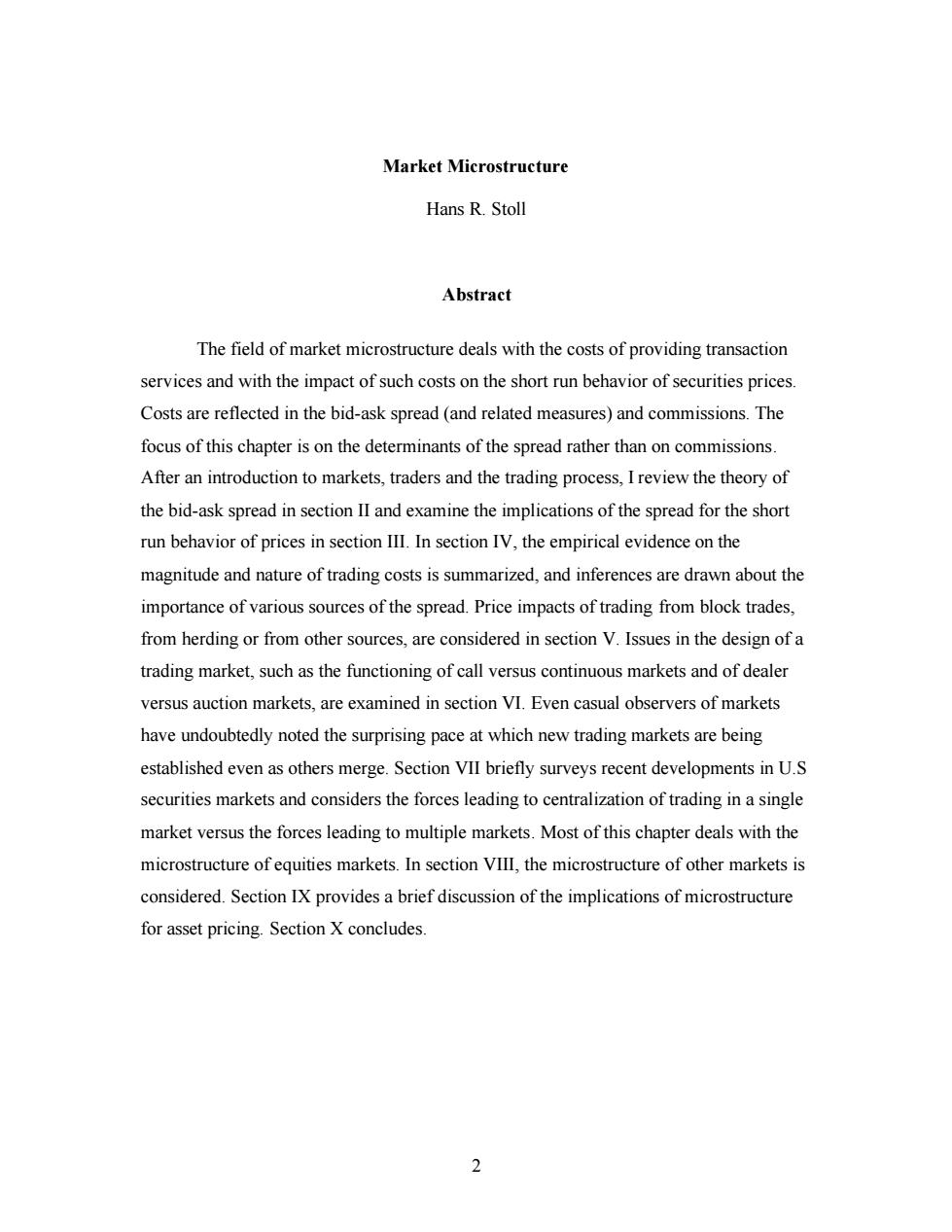正在加载图片...

Market Microstructure Hans R.Stoll Abstract The field of market microstructure deals with the costs of providing transaction services and with the impact of such costs on the short run behavior of securities prices. Costs are reflected in the bid-ask spread (and related measures)and commissions.The focus of this chapter is on the determinants of the spread rather than on commissions. After an introduction to markets,traders and the trading process,I review the theory of the bid-ask spread in section II and examine the implications of the spread for the short run behavior of prices in section III.In section IV,the empirical evidence on the magnitude and nature of trading costs is summarized,and inferences are drawn about the importance of various sources of the spread.Price impacts of trading from block trades, from herding or from other sources,are considered in section V.Issues in the design of a trading market,such as the functioning of call versus continuous markets and of dealer versus auction markets,are examined in section VI.Even casual observers of markets have undoubtedly noted the surprising pace at which new trading markets are being established even as others merge.Section VII briefly surveys recent developments in U.S securities markets and considers the forces leading to centralization of trading in a single market versus the forces leading to multiple markets.Most of this chapter deals with the microstructure of equities markets.In section VIlI,the microstructure of other markets is considered.Section IX provides a brief discussion of the implications of microstructure for asset pricing.Section X concludes. 22 Market Microstructure Hans R. Stoll Abstract The field of market microstructure deals with the costs of providing transaction services and with the impact of such costs on the short run behavior of securities prices. Costs are reflected in the bid-ask spread (and related measures) and commissions. The focus of this chapter is on the determinants of the spread rather than on commissions. After an introduction to markets, traders and the trading process, I review the theory of the bid-ask spread in section II and examine the implications of the spread for the short run behavior of prices in section III. In section IV, the empirical evidence on the magnitude and nature of trading costs is summarized, and inferences are drawn about the importance of various sources of the spread. Price impacts of trading from block trades, from herding or from other sources, are considered in section V. Issues in the design of a trading market, such as the functioning of call versus continuous markets and of dealer versus auction markets, are examined in section VI. Even casual observers of markets have undoubtedly noted the surprising pace at which new trading markets are being established even as others merge. Section VII briefly surveys recent developments in U.S securities markets and considers the forces leading to centralization of trading in a single market versus the forces leading to multiple markets. Most of this chapter deals with the microstructure of equities markets. In section VIII, the microstructure of other markets is considered. Section IX provides a brief discussion of the implications of microstructure for asset pricing. Section X concludes